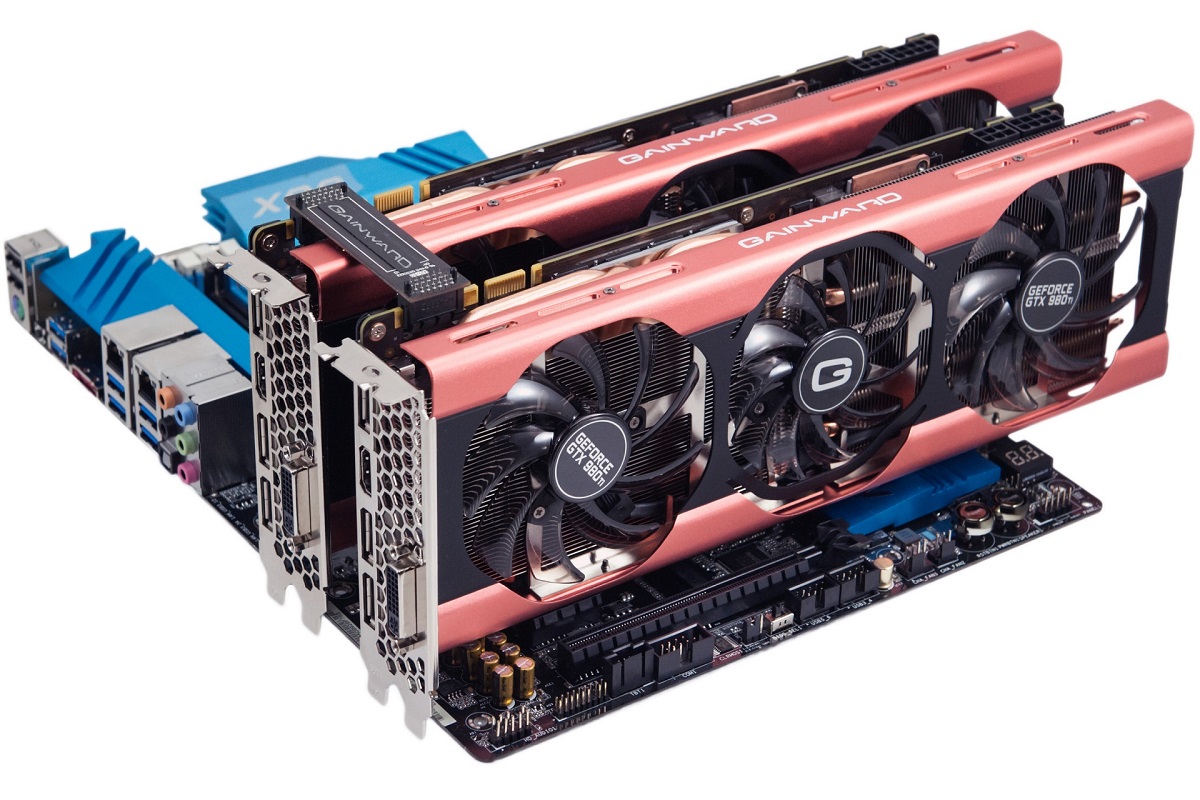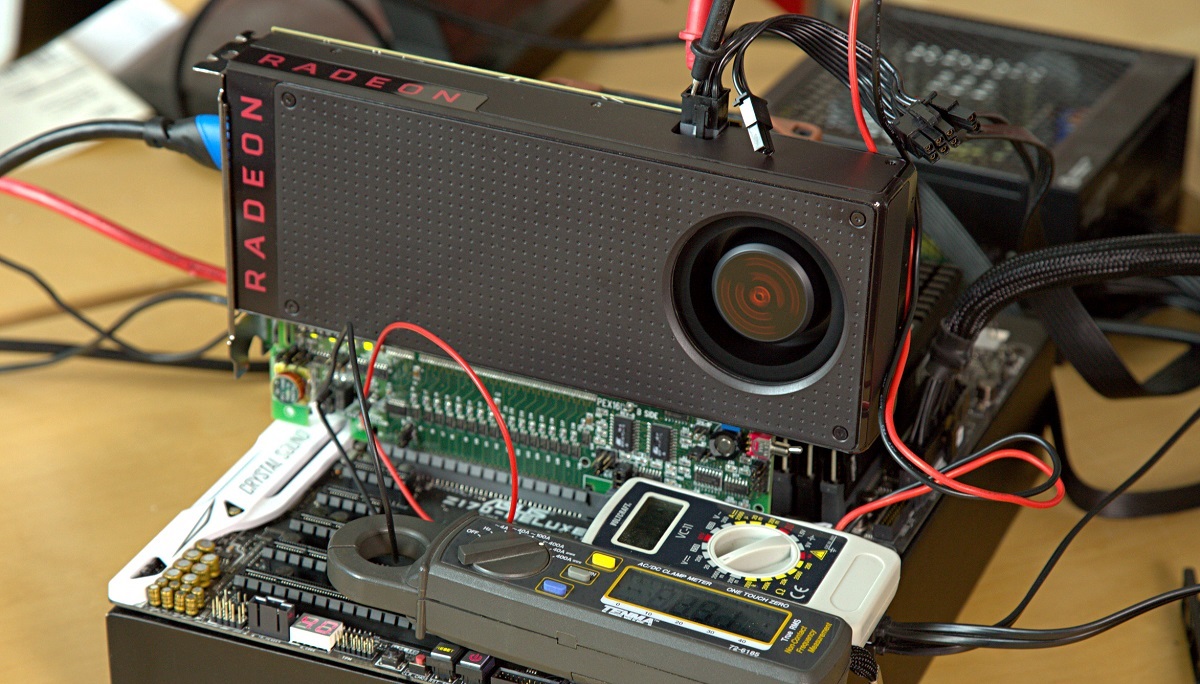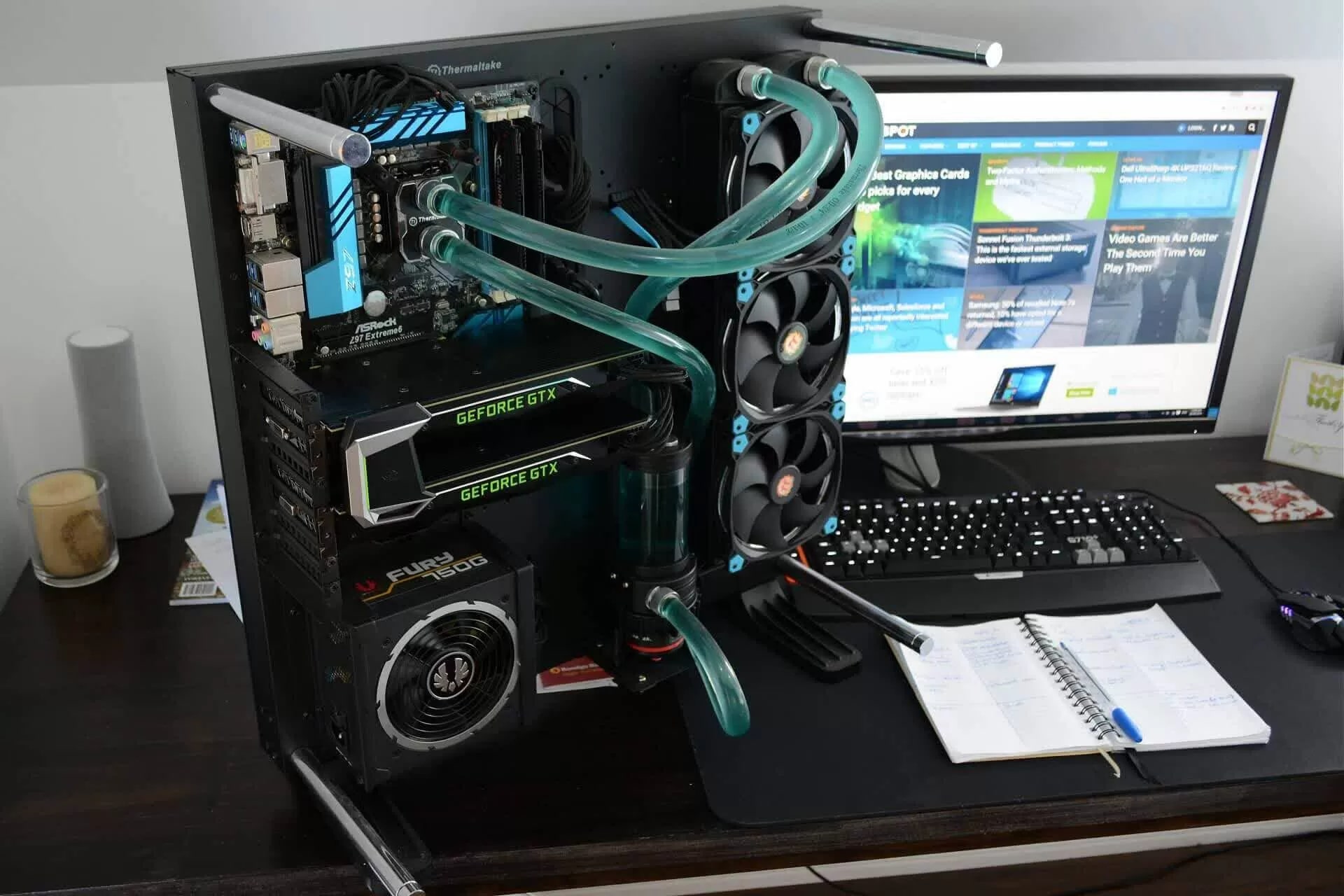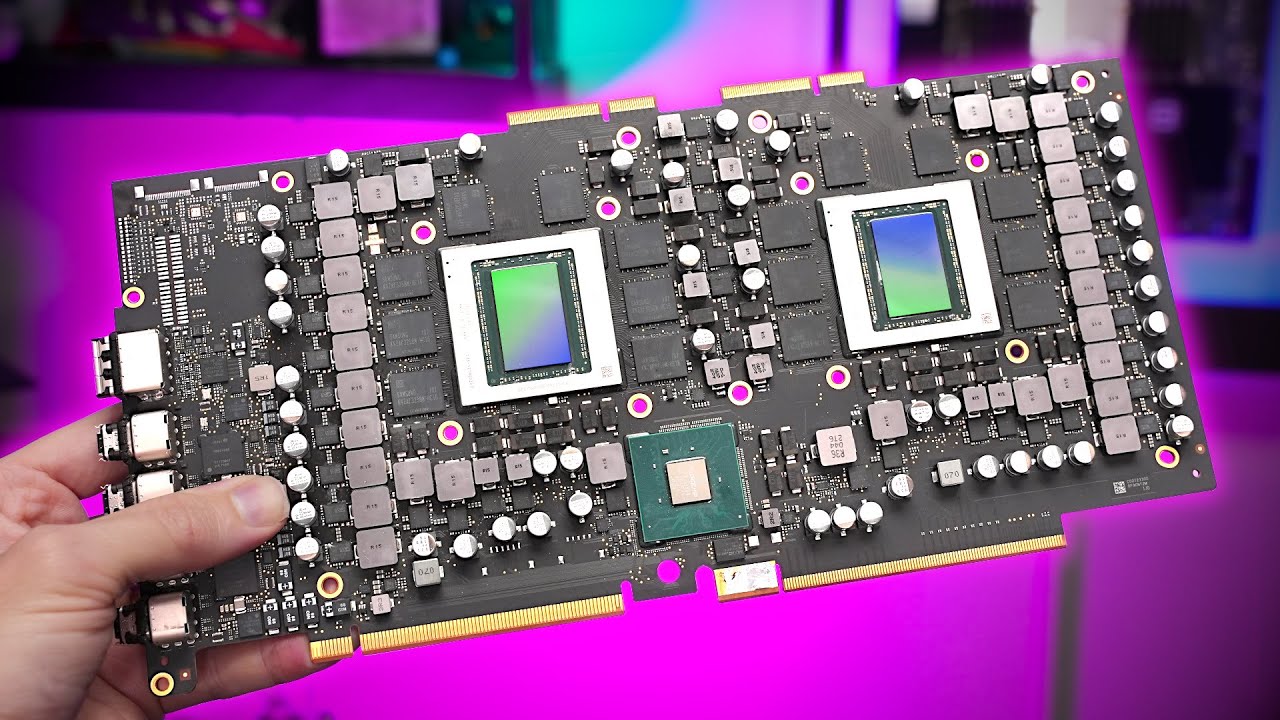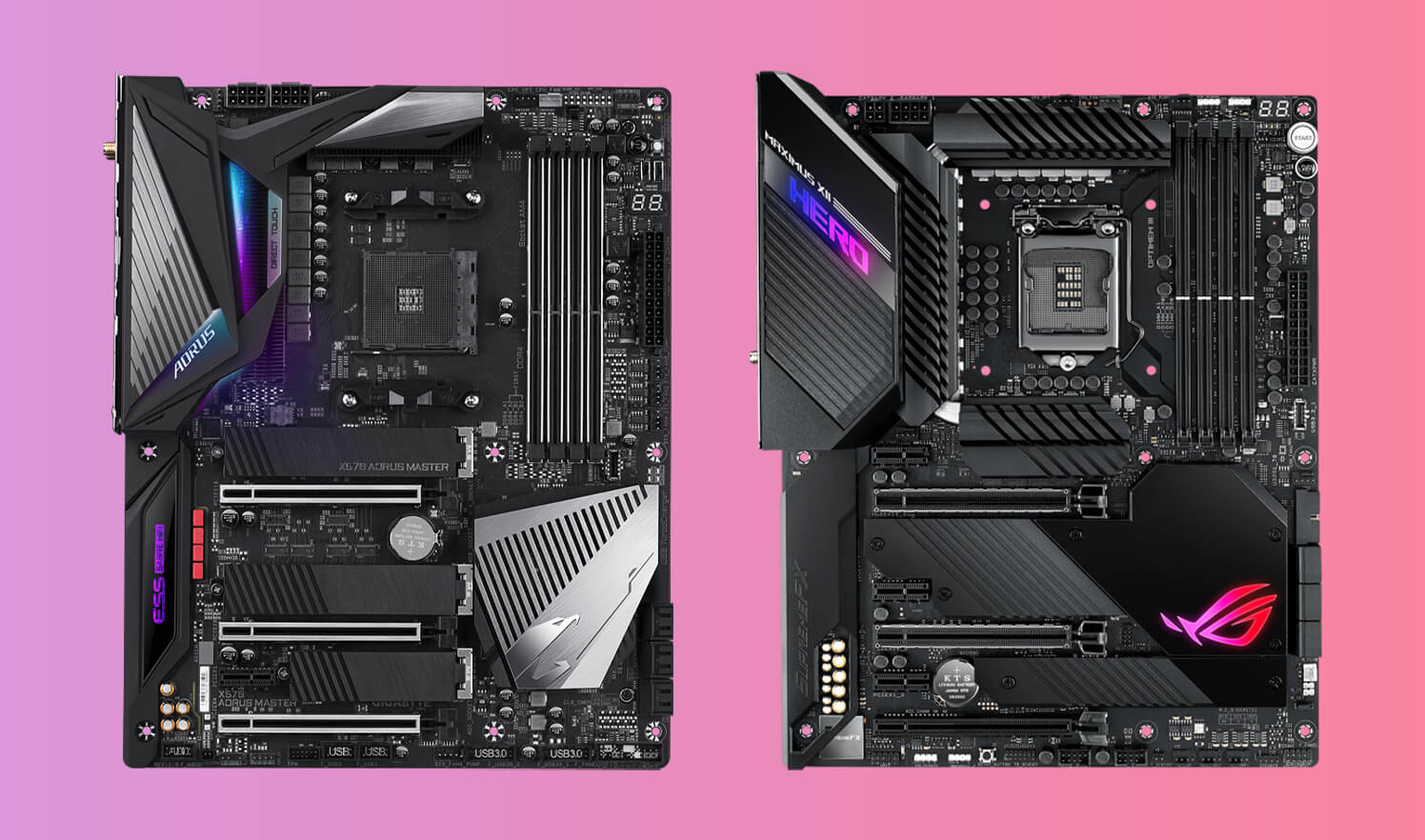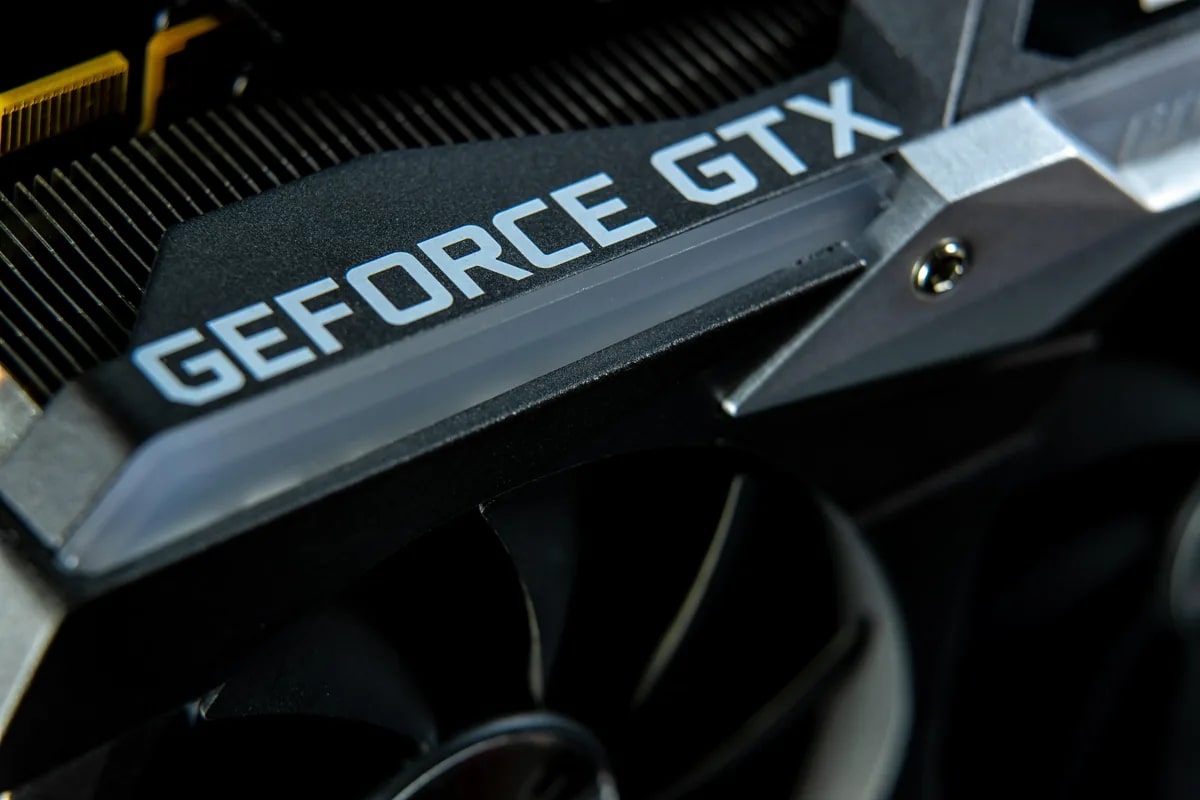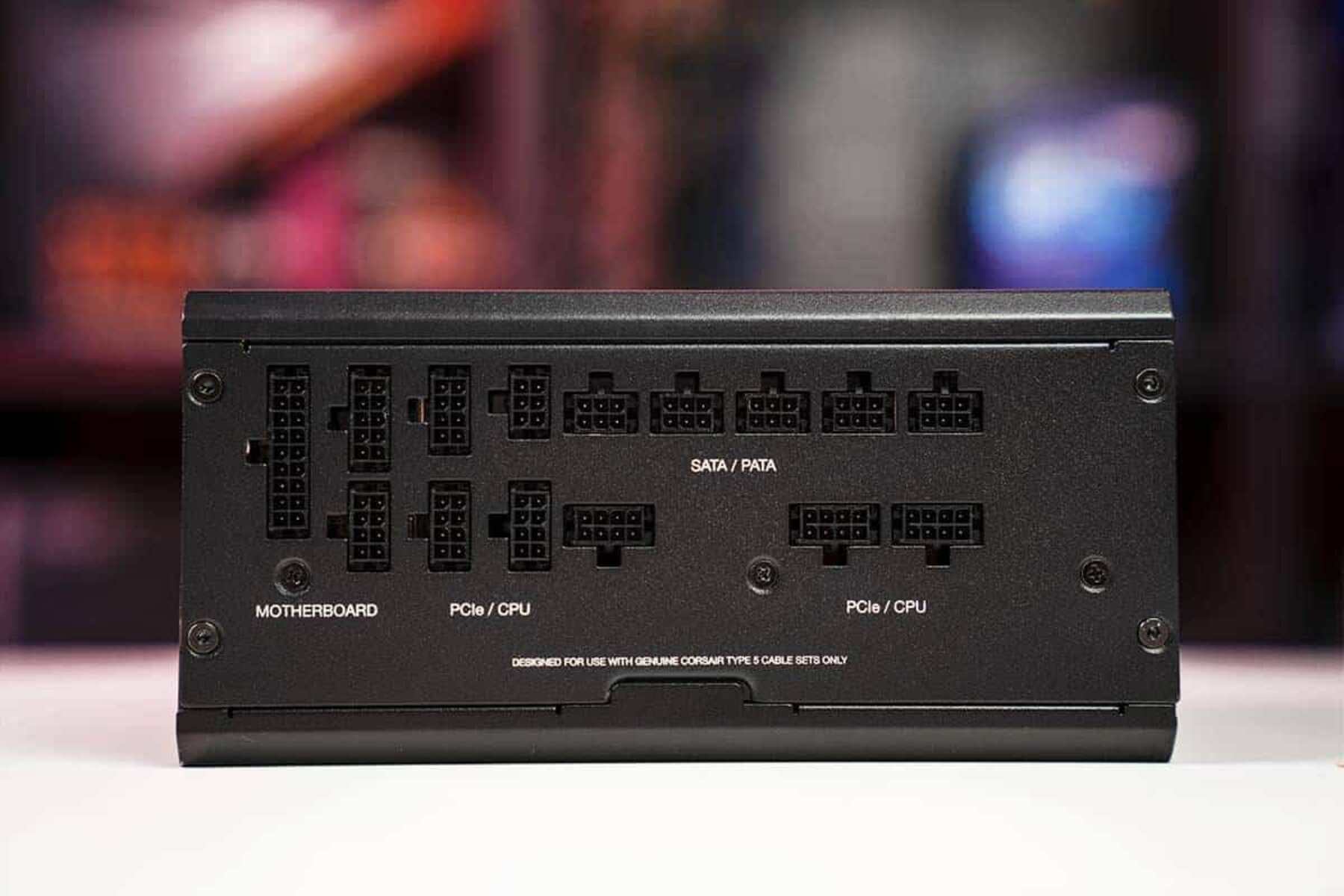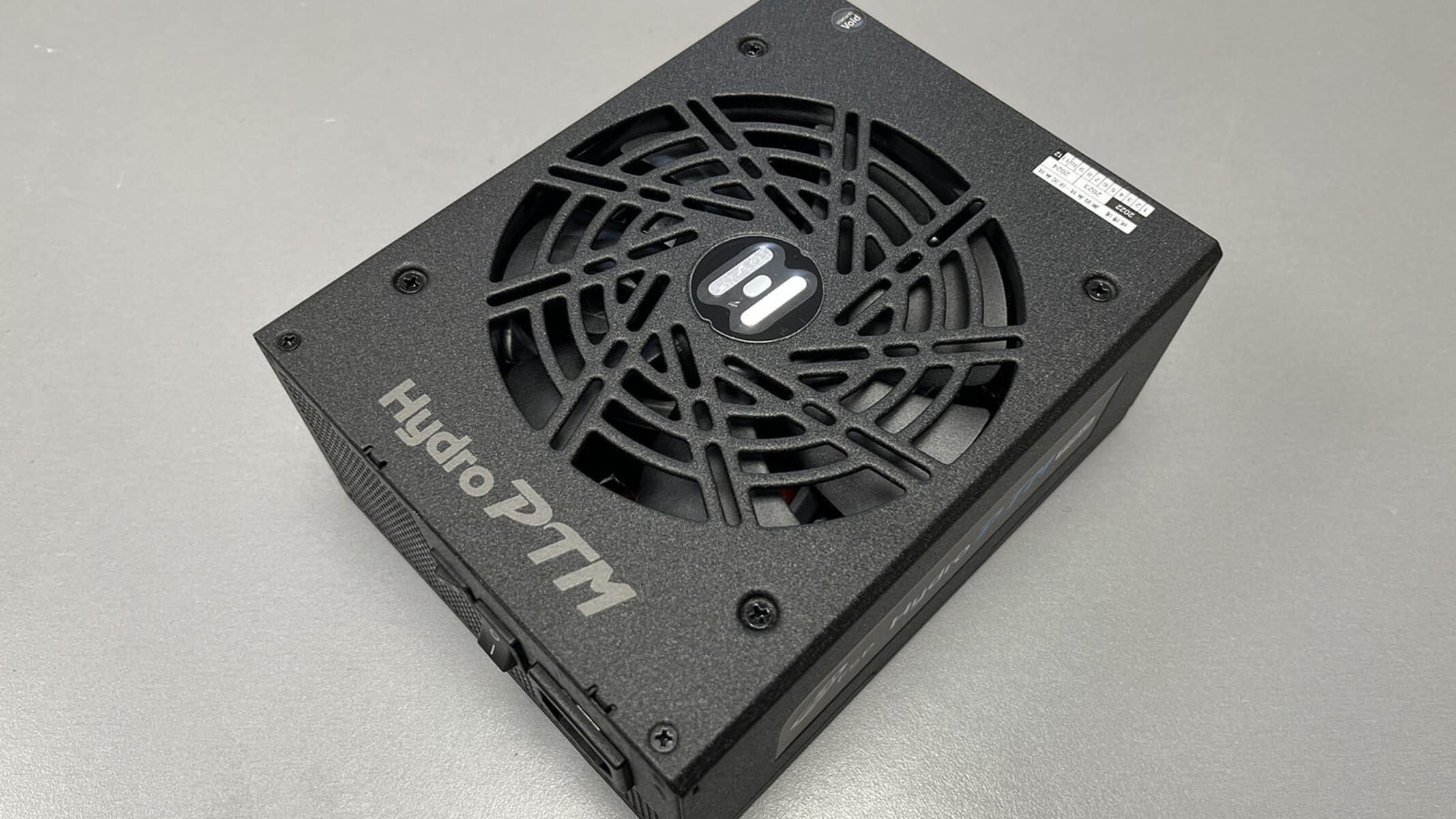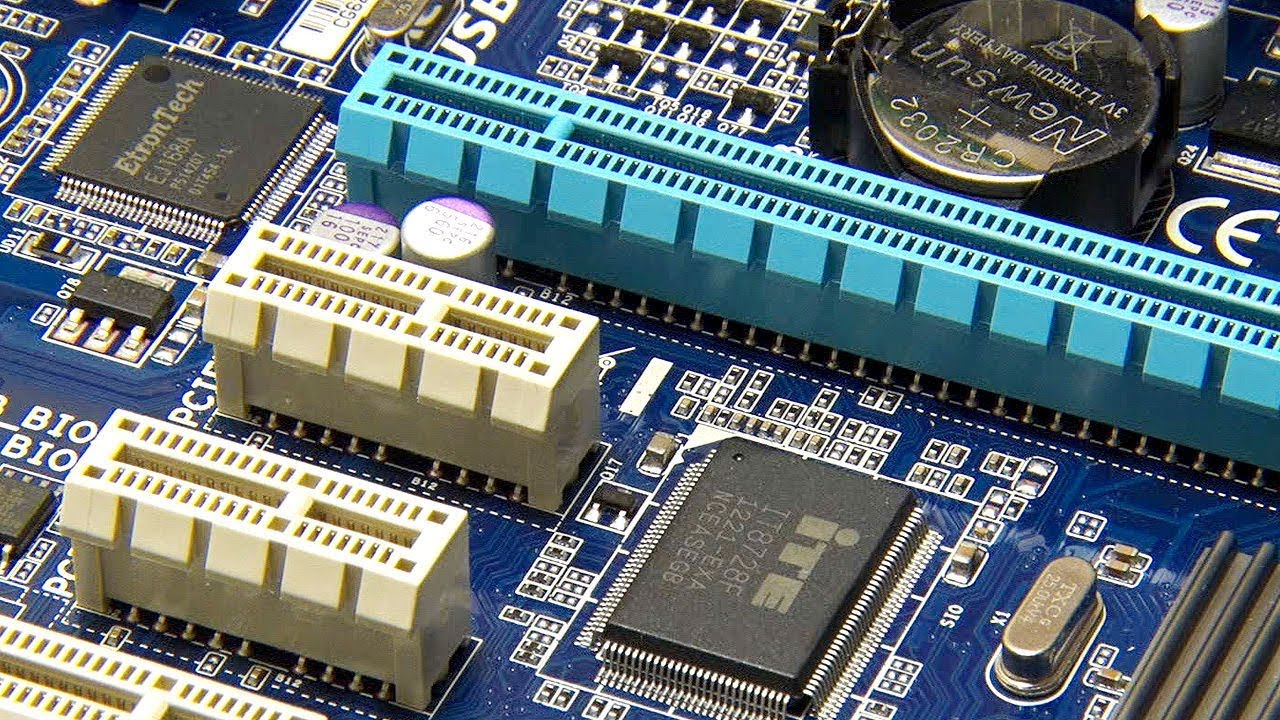Introduction
Welcome to the world of Crossfire graphics cards, where you can unlock the true potential of your gaming experience. If you’re a passionate gamer looking to boost your graphics performance, then Crossfire is just what you need. By combining multiple graphics cards, you can increase your rendering power and enjoy smoother, more immersive gameplay.
But what exactly is a Crossfire graphics card? In simple terms, Crossfire is a technology developed by AMD that allows you to connect multiple graphics cards together to work in tandem. This innovative approach to graphics processing offers significant benefits, including improved frame rates, enhanced visual quality, and increased overall gaming performance. Whether you’re playing the latest AAA titles or immersing yourself in virtual reality, Crossfire can take your gaming experience to new heights.
The popularity of Crossfire has skyrocketed among enthusiasts and pro gamers due to its ability to deliver jaw-dropping graphics and an unrivaled immersive experience. By harnessing the power of two or more graphics cards, you can conquer demanding games and unleash the full potential of your system.
So, why should you consider using Crossfire? The answer lies in the remarkable advantages it offers. Firstly, Crossfire allows for seamless parallel processing, meaning each graphics card can handle a specific portion of the graphics rendering process. This division of workload results in faster and more efficient processing, leading to smoother gameplay with higher frame rates.
Furthermore, Crossfire enables you to enjoy visually stunning graphics with increased levels of detail and realism. With multiple graphics cards working together, you can crank up the settings on your favorite games to the max, bringing every visual detail to life. From breathtaking landscapes to hyper-realistic character models, Crossfire graphics cards ensure nothing goes unnoticed.
However, before you can dive into the world of Crossfire, there are a few requirements that you need to meet. Ensuring compatibility, installing the necessary drivers, and configuring the Crossfire settings are all essential steps in making the most of this technology.
In the following sections, we will walk you through the steps necessary to set up and configure your Crossfire graphics cards. From checking compatibility to testing performance, this guide will provide you with the knowledge and skills needed to unlock the full potential of Crossfire. Let’s get started!
What is Crossfire Graphics Card?
Crossfire is a graphics card technology developed by AMD (Advanced Micro Devices) that allows multiple graphics cards to work together in your PC system. This technology is designed to enhance graphics performance, primarily for gaming enthusiasts and professionals seeking higher frame rates, improved visuals, and a more immersive gaming experience.
The Crossfire technology enables you to connect two or more compatible AMD Radeon graphics cards in your system, effectively combining their power to boost graphics rendering capabilities. By distributing the workload across multiple GPUs (Graphics Processing Units), Crossfire enhances the graphics processing power, allowing for smoother gameplay, increased frame rates, and improved graphics quality.
Crossfire utilizes parallel processing, where each connected graphics card handles a portion of the workload, thereby reducing the burden on a single GPU. This approach results in faster and more efficient rendering, as the tasks are distributed among the connected graphics cards, allowing for quicker processing and better overall performance.
One of the key benefits of Crossfire is its scalability. You can start with just two graphics cards and, if desired, add more cards later to further enhance your system’s graphics capabilities. This scalability allows you to adapt and grow your Crossfire setup according to your needs and budget.
It’s important to note that Crossfire is specific to AMD Radeon graphics cards, while its counterpart for NVIDIA graphics cards is called SLI (Scalable Link Interface). While both Crossfire and SLI achieve similar goals of improving graphics performance by utilizing multiple GPUs, they are not compatible with each other. Therefore, it’s crucial to ensure compatibility between your graphics cards and the technology they support.
Crossfire is supported by various AMD Radeon graphics cards, and compatibility can be checked through AMD’s official website or by consulting the documentation that comes with your graphics cards. It’s worth noting that not all games or applications may fully utilize Crossfire’s capabilities, as software optimization is required to take advantage of the technology. However, many popular games and applications do support Crossfire, and new game releases often include optimizations for multi-GPU setups.
In summary, Crossfire is a graphics card technology developed by AMD that allows multiple GPUs to work together in your system, improving graphics performance for gaming and other visually demanding tasks. With its scalable setup and parallel processing capabilities, Crossfire can deliver smoother gameplay, higher frame rates, and enhanced graphics quality, making it a compelling choice for those seeking to take their gaming experience to the next level.
Benefits of Crossfire Graphics Card
Investing in a Crossfire graphics card setup can bring a myriad of benefits to your gaming experience. By harnessing the power of multiple GPUs, Crossfire offers enhanced graphics performance and a more immersive gaming environment. Let’s explore some of the key advantages of utilizing Crossfire.
1. Increased Performance: One of the primary benefits of Crossfire is the significant boost in performance it provides. By combining the processing power of multiple graphics cards, Crossfire can handle graphics-intensive tasks with ease, resulting in smoother gameplay, higher frame rates, and reduced lag. This means you can play the latest games at higher settings and resolutions, ensuring a more immersive and visually stunning gaming experience.
2. Enhanced Visual Quality: Crossfire enables you to push the boundaries of visual fidelity in your games. With multiple GPUs working together, you can increase the graphics settings and enjoy stunning visuals, including higher resolutions, sharper textures, improved lighting effects, and more detailed character models. The increased rendering power of Crossfire ensures that every detail comes to life on your screen, enhancing your overall gaming immersion.
3. Better Multi-monitor Support: Crossfire offers excellent multi-monitor support, allowing you to connect multiple displays to your system for a panoramic gaming experience. With Crossfire, each display can be assigned to a separate GPU, providing smoother performance across all monitors. This feature is especially beneficial for gamers who enjoy playing immersive games or need multiple displays for productivity tasks.
4. Scalability and Future-proofing: Another advantage of Crossfire is its scalability. You can start with a dual-GPU setup and later expand to include more graphics cards as your needs and budget allow. This flexibility ensures that your system remains future-proof, as you can easily upgrade your Crossfire setup when newer and more powerful GPUs become available.
5. Cost-effective Performance Boost: Crossfire offers a cost-effective way to increase your graphics performance without having to invest in a single high-end GPU. By combining two or more mid-range graphics cards, you can achieve similar or even better performance than a single high-end card, potentially saving you money while still enjoying a top-tier gaming experience.
6. Competitive Advantage: For competitive gamers, every millisecond counts. Crossfire can give you a competitive edge in multiplayer games, where fast and smooth performance is crucial. With Crossfire, you can achieve higher frame rates, reduce input lag, and ensure a more responsive gaming experience, allowing you to react quickly and effectively in fast-paced gaming situations.
7. Future-proofing: Crossfire technology offers a level of future-proofing by enabling you to add additional graphics cards as your needs evolve. This scalability allows you to keep up with the demanding requirements of upcoming games, ensuring that your system remains capable of delivering smooth and visually stunning performance for years to come.
In summary, Crossfire graphics card setups provide a range of benefits, including increased performance, enhanced visual quality, better multi-monitor support, scalability, cost-effectiveness, a competitive advantage in gaming, and future-proofing. Whether you’re a casual gamer, a professional streamer, or an enthusiast seeking the ultimate gaming experience, Crossfire offers a compelling solution to elevate your graphics performance and immerse yourself in the world of gaming like never before.
Requirements for Crossfire
Before diving into the world of Crossfire, it’s essential to ensure that you meet the necessary requirements to set up and utilize this graphics card technology effectively. Let’s take a look at the key requirements for a successful Crossfire setup.
1. Compatible Graphics Cards: The most crucial requirement for Crossfire is having compatible graphics cards. Crossfire is supported by a range of AMD Radeon graphics cards, and it’s important to ensure that your graphics cards are listed as compatible by AMD. Refer to the manufacturer’s documentation or visit the official AMD website to check the compatibility of your graphics cards.
2. Matching Graphics Cards: To enable Crossfire, it’s necessary to have matching graphics cards. While it is possible to combine graphics cards from different manufacturers, it is highly recommended to use the same model and specifications for optimal performance and compatibility. Mismatched cards may work, but compatibility and performance could be compromised.
3. Sufficient Power Supply: Crossfire setups require a robust and sufficient power supply to support multiple graphics cards operating simultaneously. Ensure that your power supply unit (PSU) has enough wattage and the appropriate connectors to supply power to all the graphics cards and other components in your system. Refer to the specifications of your graphics cards and PSU to determine the required power supply capacity.
4. Sufficient Cooling: Multiple graphics cards produce more heat, which means you need adequate cooling to maintain stable operating temperatures. Ensure that your system has proper airflow, case fans, and CPU cooling solutions to keep the temperatures under control. Heat issues can affect the performance and lifespan of your graphics cards, so it’s crucial to prioritize cooling in your Crossfire setup.
5. Sufficient PCIe Slots: Crossfire requires multiple PCIe (Peripheral Component Interconnect Express) slots on your motherboard to accommodate the graphics cards. Ensure that your motherboard has enough available PCIe slots and that they are spaced correctly to accommodate the desired number of graphics cards. Refer to your motherboard’s documentation to verify the number and configuration of PCIe slots.
6. Updated Graphics Card Drivers: To ensure optimal functionality and performance, it’s important to have the latest drivers for your graphics cards installed. Check the manufacturer’s website for the most up-to-date drivers, or utilize their proprietary software to easily update your drivers to the latest version. Keeping your drivers up-to-date is vital for compatibility and performance enhancements.
7. Sufficient System Resources: Crossfire setups can be resource-intensive, so it’s important to consider the overall capabilities of your system. Ensure that your CPU, RAM, and other components have sufficient performance to keep up with the demands of multiple GPUs. Insufficient system resources can lead to bottlenecks and hinder the full potential of your Crossfire setup.
By meeting these requirements, you can ensure a smooth and successful Crossfire setup. It is crucial to thoroughly research and check compatibility and specifications of the graphics cards, power supply, cooling, PCIe slots on your motherboard, and system resources to avoid any issues or limitations. Adhering to these requirements will help you unlock the full potential of Crossfire and enjoy the benefits of enhanced graphics performance in your gaming endeavors.
Step 1: Check Compatibility
Before diving into the exciting world of Crossfire, it’s essential to ensure that your graphics cards are compatible with the Crossfire technology. Checking compatibility is a crucial step to ensure smooth and successful implementation of Crossfire. Let’s explore how you can check the compatibility of your graphics cards for Crossfire.
1. Consult Manufacturer’s Documentation: Begin by referring to the documentation provided by the manufacturer of your graphics cards. The documentation typically includes compatibility information and lists of supported Crossfire configurations. It will specify which models and series of graphics cards are compatible with Crossfire, ensuring you have the necessary hardware to proceed.
2. Visit the Manufacturer’s Website: To get the most up-to-date information on graphics card compatibility, visit the official website of the graphics card manufacturer. Manufacturers often provide compatibility information and lists of supported graphics cards for Crossfire on their websites. Look for dedicated sections or support pages that provide details about Crossfire compatibility.
3. Use the AMD Crossfire Compatibility Tool: AMD offers a convenient and user-friendly compatibility tool to check the compatibility of your graphics cards. The AMD Crossfire Compatibility Tool enables you to select your specific graphics cards and provides an instant compatibility report. Simply visit the AMD website, locate the compatibility tool, and follow the instructions to check the compatibility of your graphics cards.
4. Check Community Forums and Discussions: Online community forums and discussions can be valuable resources when it comes to checking compatibility for Crossfire. Many enthusiasts and users share their experiences and insights, which can help you determine if your specific graphics cards are compatible with Crossfire. Participate in relevant forums, ask questions, and search for existing discussions to gather valuable information from those who have already tested similar setups.
5. Seek Professional Advice: If you are unsure about the compatibility of your graphics cards, consider reaching out to professionals or experts in the field. Consulting with a knowledgeable technician or system builder can provide insight and guidance specifically tailored to your setup, ensuring a smooth and compatible Crossfire implementation.
By following these steps, you can verify the compatibility of your graphics cards for Crossfire, ensuring that you have the necessary hardware to proceed with setting up multiple GPUs. Remember to keep your graphics card drivers up-to-date, as this can also affect compatibility and performance. Checking compatibility is an essential first step to ensure a successful Crossfire setup, allowing you to fully unlock the remarkable performance and visual enhancements that multiple graphics cards can provide.
Step 2: Install the Drivers
Once you have confirmed the compatibility of your graphics cards for Crossfire, the next step is to install the necessary drivers. Properly installed and updated drivers are crucial for ensuring optimal performance and compatibility with Crossfire. Follow these steps to install the drivers for your Crossfire graphics cards:
1. Identify Your Graphics Card Models: Before proceeding, make sure you know the exact models of your graphics cards. This information can usually be found on the physical cards or in the documentation that came with them. Knowing the specific models will help you download the correct drivers from the manufacturer’s website.
2. Visit the Manufacturer’s Website: Go to the official website of the graphics card manufacturer (e.g., AMD) and navigate to the support or driver download section. Look for the option to select the model and series of your graphics card to access the appropriate drivers.
3. Download the Latest Drivers: Locate and download the latest drivers for your graphics cards. It’s crucial to have the most up-to-date drivers, as they often include performance enhancements and bug fixes. Follow the instructions provided on the manufacturer’s website to download the drivers to your computer.
4. Uninstall Existing Graphics Card Drivers: Before installing the new drivers, it’s recommended to uninstall any existing graphics card drivers on your system. To do this, open the Control Panel or Settings on your computer, navigate to the “Programs” or “Apps” section, and uninstall any software related to the previous graphics driver. Restart your computer after the uninstallation process is complete.
5. Install the New Drivers: Once your system has restarted, locate the downloaded driver file on your computer and run the installer. Follow the on-screen instructions to install the new drivers for your graphics cards. During the installation process, ensure that you select the installation options specific to your Crossfire setup, if prompted.
6. Restart Your Computer: After the driver installation is complete, it’s essential to restart your computer to allow the changes to take effect and ensure proper driver initialization. Restarting your computer will also help ensure that the updated drivers are loaded correctly.
7. Check Driver Status and Updates: After rebooting, verify that the new drivers are installed correctly. Open the graphics card control panel or the device manager on your computer to check the driver version and confirm that Crossfire is recognized and enabled. Additionally, periodically check for driver updates on the manufacturer’s website to stay up-to-date with the latest improvements and optimizations.
By following these steps, you can successfully install and update the drivers for your Crossfire graphics cards. Proper driver installation is critical for ensuring optimal performance, compatibility, and stability in your Crossfire setup. Now that your drivers are installed, you can move on to the next steps in configuring and utilizing Crossfire to unleash the full power of your multiple graphics cards.
Step 3: Connecting the Graphics Cards
Once you have installed the necessary drivers for your Crossfire graphics cards, the next step is to physically connect the cards in your system. Properly connecting the graphics cards is crucial for enabling Crossfire functionality and ensuring smooth communication between the GPUs. Follow these steps to connect your Crossfire graphics cards:
1. Power Off Your Computer: Before starting the hardware installation process, make sure to power off your computer and disconnect it from any power sources. This will prevent any potential electrical damage and ensure your safety during the installation process.
2. Locate the PCIe Slots: Identify the PCIe (Peripheral Component Interconnect Express) slots on your motherboard where you will install the graphics cards. These slots are typically longer than other expansion slots and are designed to accommodate high-performance devices such as graphics cards.
3. Determine the Configuration: Depending on the number of graphics cards and the specific motherboard, you’ll need to decide on the Crossfire configuration you want to use. Some common configurations include 2-way Crossfire (two graphics cards) or 3-way/4-way Crossfire (three or four graphics cards). Refer to your motherboard’s documentation to determine the recommended slot configuration for your specific setup.
4. Insert the Graphics Cards: Carefully insert the graphics cards into the PCIe slots one by one. Apply gentle, even pressure to ensure the card is properly seated in the slot. Make sure the card’s gold contacts are properly aligned with the slot, and the external ports are accessible from the rear of the computer’s case.
5. Secure the Graphics Cards: Once inserted, secure the graphics cards in place using the retention mechanisms provided, such as screws or latches. Ensure the cards are firmly attached to the motherboard to avoid any movement or disconnection during operation.
6. Connect Power Cables: Depending on the specific graphics card and power supply configuration, you may need to connect the required power cables to the graphics cards. Check the documentation provided with your graphics cards and power supply to determine the necessary power connections. Ensure that the power cables are securely connected and properly routed to avoid any interference with other components.
7. Reassemble Your Computer: After the graphics cards are connected and secured, reassemble your computer by reconnecting any disconnected cables and components. Ensure that all connections, including power cables and data cables, are properly secured to their respective ports on the motherboard and other components.
8. Power On Your Computer: Finally, power on your computer and check if the graphics cards are detected by your system. Open the graphics card control panel or device manager to verify that all the installed cards are recognized and properly functioning. If needed, consult the manufacturer’s documentation or support resources to troubleshoot any detected issues.
By following these steps, you can successfully connect your Crossfire graphics cards in your system. Properly connecting the cards is vital for enabling Crossfire functionality and ensuring effective communication between the GPUs. Now that your graphics cards are physically connected, you can proceed to the next steps of configuring Crossfire in the graphics card control panel to fully unleash the combined power of your multiple GPUs.
Step 4: Configuring Crossfire in Graphics Card Control Panel
Once you have connected your Crossfire graphics cards, the next step is to configure Crossfire in the graphics card control panel. Configuring Crossfire is essential to enable the proper utilization of multiple GPUs and maximize their performance. Follow these steps to configure Crossfire in the graphics card control panel:
1. Open the Graphics Card Control Panel: Depending on your graphics card manufacturer, open the respective graphics card control panel software. For AMD Radeon graphics cards, this software is usually called AMD Radeon Settings or AMD Catalyst Control Center. Look for the software icon in your system tray or search for it in your Start menu.
2. Navigate to the Crossfire Settings: Within the graphics card control panel, locate the settings related to Crossfire or multi-GPU configurations. The specific location and naming of these settings may vary depending on the graphics card driver version and software interface. Look for options like “AMD Crossfire,” “Multi-GPU,” or similar terms.
3. Enable Crossfire: Once you have accessed the Crossfire settings, you will typically find an option to enable or disable Crossfire functionality. Enable the Crossfire option to initiate the utilization of multiple GPUs. Additionally, you may also have the option to select the desired Crossfire rendering mode, such as “AFR-Friendly” (Alternate Frame Rendering) or “Optimized 1×1” mode.
4. Save and Apply Settings: After enabling Crossfire and selecting the desired settings, save the changes and apply the new configuration. The software will likely prompt you to restart your computer to finalize the changes. Follow the instructions to restart your system and allow the new settings to take effect.
5. Confirm Crossfire Operation: Once your system has restarted, check if Crossfire is operational. Open the graphics card control panel again and navigate to the Crossfire settings. Verify that Crossfire is still enabled and confirm that all connected graphics cards are recognized and properly functioning. Some control panel software may provide diagnostic tools or indicators to show the status and activity of each graphics card.
6. Test Performance and Compatibility: To ensure that Crossfire is functioning as intended, test the performance and compatibility of your graphics card setup. Run graphics-intensive applications or benchmarking software that can stress the GPUs and measure their performance. Ensure that the applications are correctly utilizing both GPUs and that you experience improved performance compared to single-GPU operation.
7. Adjust Crossfire Settings (if necessary): Depending on your specific setup and the applications you use, further fine-tuning of Crossfire settings may be necessary. Experiment with different Crossfire modes or specific application profiles within the graphics card control panel to optimize performance and address any compatibility issues. Online resources and community forums can provide valuable insights and recommendations for optimizing Crossfire settings for different games and applications.
By following these steps, you can successfully configure Crossfire in the graphics card control panel and ensure the optimal utilization of your multiple GPUs. Configuring Crossfire allows the connected graphics cards to work together efficiently, resulting in improved graphics performance, higher frame rates, and an enhanced gaming experience. Utilize the control panel settings to fine-tune Crossfire and maximize the benefits of your Crossfire graphics card setup.
Step 5: Testing Crossfire Performance
After configuring Crossfire in the graphics card control panel, the next step is to test the performance of your Crossfire setup. Testing is crucial to ensure that Crossfire is functioning as intended and providing the desired performance improvements. Follow these steps to effectively test the performance of your Crossfire graphics card setup:
1. Choose Benchmarking Software: Select benchmarking software that is specifically designed to measure the performance of graphics cards. Popular benchmarking tools include 3DMark, Unigine Heaven, and FurMark. These tools can stress the GPUs and provide detailed reports on frame rates, rendering quality, and other relevant metrics.
2. Run Benchmarking Tests: Open the chosen benchmarking software and select the appropriate test. Take note that some benchmarks offer specific Crossfire tests to evaluate multi-GPU performance. Run the benchmark and allow it to complete, capturing the information and results provided at the end of the test.
3. Compare Results: Compare the benchmark results between the Crossfire setup and the performance of a single GPU. Look for significant improvements in frame rates and rendering quality when Crossfire is enabled. Analyze the data to ensure that both of your graphics cards are being utilized effectively and that performance is scaling properly with the addition of multiple GPUs.
4. Test Real-World Applications: It’s also essential to test the performance of your Crossfire setup in real-world scenarios, such as playing demanding games or using graphics-intensive applications. Launch games or applications that typically require substantial graphics processing power and monitor the FPS (Frames Per Second) and overall performance. Ensure that Crossfire is effectively accelerating the rendering and delivering smoother gameplay or improved graphics quality.
5. Monitor Temperatures and Stability: During performance testing, keep an eye on the temperatures of your graphics cards. Crossfire setups can generate increased heat output, so monitor the temperatures using monitoring software or the graphics card control panel. Ensure that the temperatures are within safe limits and that the cooling system is effectively managing the additional heat load. Additionally, monitor system stability to ensure that Crossfire is not causing stability issues or crashes.
6. Fine-tune Crossfire Settings: Based on the performance testing results, you may need to fine-tune the Crossfire settings to optimize performance further or address any compatibility issues. Experiment with different Crossfire modes or application-specific profiles to ensure the best possible performance in various scenarios. Referring to online resources, forums, and guides specific to your games or applications can provide valuable insights into optimizing Crossfire settings.
7. Repeat and Verify: It’s recommended to repeat the performance testing periodically to ensure the ongoing functionality and effectiveness of your Crossfire setup. Monitor for any changes in performance or compatibility issues that may arise due to driver updates, game updates, or hardware changes. Regular testing and verification will help you maintain the optimal performance of your Crossfire graphics card setup.
By following these steps, you can effectively test the performance of your Crossfire graphics card setup. Through benchmark testing and real-world application testing, you can ensure that your Crossfire configuration is delivering the desired improvements in performance, frame rates, and visual quality. Fine-tuning the Crossfire settings based on the test results will allow you to optimize your system and fully leverage the power of multiple GPUs for an immersive and high-performance gaming experience.
Troubleshooting Common Issues
While setting up and configuring Crossfire can provide significant benefits, it is not uncommon to encounter certain issues along the way. Understanding and troubleshooting common problems can help ensure a smooth and successful Crossfire experience. Here are some common issues you may encounter and the steps to troubleshoot them:
1. Crossfire Not Recognized: If your Crossfire setup is not being recognized by the system or the graphics card control panel, ensure that both graphics cards are properly seated in their respective PCIe slots. Check the power and data connections to ensure they are secure and correctly connected. Additionally, ensure that the Crossfire option is enabled in the graphics card control panel settings.
2. Inconsistent Crossfire Scaling: One potential issue with Crossfire is inconsistent performance scaling across different games or applications. This can happen due to varying levels of optimization for multi-GPU configurations by different software developers. To address this, check for game-specific Crossfire profiles or settings within the control panel software. Experiment with different Crossfire modes, such as AFR-Friendly or Optimized 1×1, to find the best-performing setting for each game or application.
3. Micro-stuttering: Micro-stuttering is a phenomenon where the frame delivery is not completely smooth, causing small interruptions or irregularities in the gaming experience. To minimize micro-stuttering in Crossfire setups, ensure that your graphics cards are running at similar clock speeds and that the drivers are up-to-date. Additionally, monitoring and adjusting the V-Sync settings within games can help mitigate micro-stuttering issues.
4. Temperature and Cooling Issues: Multiple graphics cards can generate additional heat, potentially leading to temperature and cooling concerns. Ensure that your system has adequate cooling, such as case fans and proper airflow, to maintain optimal operating temperatures. Monitor the temperatures of your graphics cards using software utilities or the graphics card control panel. If temperatures are excessively high, consider adjusting fan speeds, applying additional cooling solutions, or optimizing the airflow in your system.
5. Power Supply Limitations: Crossfire setups require sufficient power to operate smoothly. If you experience stability issues, crashes, or unexpected shutdowns, it could indicate insufficient power supply. Check that your power supply is capable of providing enough wattage to support multiple graphics cards, taking into account other system components. Consider upgrading to a higher-capacity power supply if necessary.
6. Driver Issues: If you encounter graphical glitches, performance issues, or system instability, it may be due to problematic graphics card drivers. Ensure that you have the latest drivers installed and consider performing a clean installation of the drivers. Completely uninstall the existing drivers using a driver uninstallation tool or the manufacturer’s official uninstallation utility, and then install the latest drivers from scratch.
7. Compatibility with Applications: Some games or applications may not be fully optimized for Crossfire configurations, leading to compatibility issues or suboptimal performance. Check for updates or patches for the specific game or application to ensure they are compatible with Crossfire and utilize multi-GPU configurations effectively. If compatibility issues persist, consider disabling Crossfire for those specific applications to avoid any problems.
8. System Instability: In some cases, Crossfire setups can lead to general system instability, such as crashes, freezes, or BSOD (Blue Screen of Death) errors. Ensure that all other system components, such as the CPU, RAM, and storage, are stable and compatible with Crossfire. Test the stability of your system by running stress tests or benchmarking utilities specifically designed to stress the entire system, ensuring that Crossfire is not the sole cause of the instability.
By troubleshooting common issues that may arise during the Crossfire setup, you can address any challenges and ensure smooth operation of your multiple graphics card configuration. Remember to consult manufacturer documentation, seek assistance from online communities, and stay up-to-date with driver updates and game patches to maintain optimal performance and stability in your Crossfire system.
Conclusion
Congratulations! You have successfully learned the steps to set up and configure Crossfire graphics cards, unlocking the potential for exceptional gaming performance and visuals. By combining multiple GPUs, Crossfire allows for smooth gameplay, increased frame rates, and enhanced graphics quality. With careful consideration of compatibility, proper driver installation, connecting the graphics cards, and configuring Crossfire in the graphics card control panel, you have optimized your system for an immersive gaming experience.
Remember to periodically test the performance of your Crossfire setup using benchmarking software and real-world applications. This will help ensure that your Crossfire configuration is delivering the desired improvements and allow you to fine-tune settings when needed. Additionally, troubleshooting common issues such as compatibility challenges, temperature concerns, and stability problems is vital for maintaining optimal performance and resolving any obstacles that may arise.
Be proactive in keeping your graphics card drivers up-to-date and staying informed about game updates and patches that may further optimize Crossfire performance. Seek assistance from online communities and forums if you encounter any difficulties, as the gaming community often has valuable insights and experiences to share.
With a successful Crossfire setup, you are now well-equipped to take on even the most demanding games and experience the thrill of highly immersive and visually stunning gameplay. Enjoy the seamless graphics processing power and take your gaming experience to new heights. Happy gaming!







